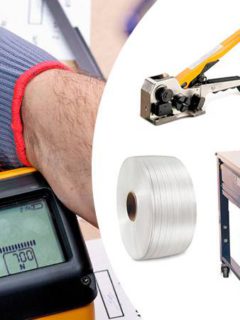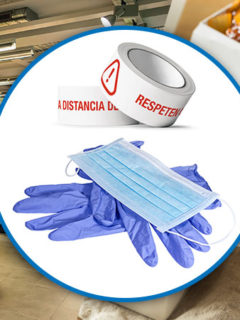¿Cuál será el balance general de las e-commerce tras las ventas de Navidad y las Rebajas de invierno? La mayoría de los e-commerce consultarán los datos oficiales de ventas e ingresos generados por este periodo estratégico. Pero los más expertos también revisarán la tasa de devoluciones. El motivo: este dato es cada vez más y más importante para cualquier responsable de la gestión de logística de un e-commerce. Los españoles consideran que la devolución sin problemas es uno de los factores más importantes de una compra online[1] y el 34% reconocen haber devuelto algún artículo en el pasado año.[2]
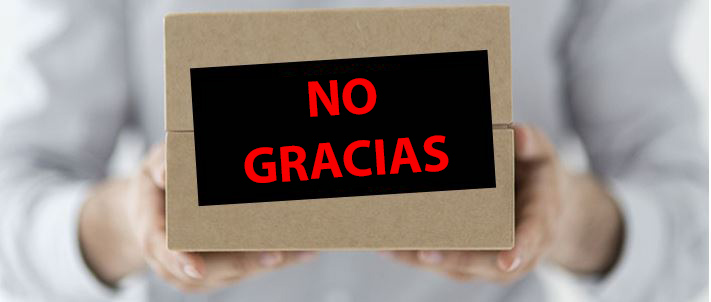
Y se espera que estas cifras crezcan, así que hay que estar preparados… Y aquí es donde entra la logística inversa, que es la encargada de la gestión de la devolución de las mercancías desde el cliente final hasta el origen. Su control es importante desde el punto de vista de gestión de costes y tratamiento de residuos, pero, además, que las devoluciones s
if your customer wants to return an item, don’t try to hinder him. Facilitating the return is a strategic moment that can determine whether or not he will buy from you again
reducing the number of returns is possible. We have selected some tips from experts
we’ll be counting on the advice of Eddy Rechauvet, reverse logistics expert and co-founder of ShopRunBack, the award-winning automated management solution for multiple returns in logistics, e-commerce and innovation. 1 million returns managed in Europe in 2017
Some figures on Internet users’ habits
- More than 60% of Internet users check the return policy before buying
- They also think that the return is free, especially when the delivery of the order is also usually free
- 90% are willing to buy again from a site that makes it easy to return their order
It is important to remember that returns are first and foremost a legal obligation.
the consumer has 14 calendar days from receipt of the product to return it. It is therefore necessary to define a strategy for receiving these returns. The volume to be managed will be proportional to the volume of parcels sent; and therefore, at the end of the year, as sales multiply, there is more likelihood of returns. “Justas logistics has improved (and continues to improve) to provide a smooth experience at the time of delivery, we must strive to provide a simple and seamless experience for returning an order. It is the best way to build loyalty with your buyers!” advises Benoit Minvielle, e-commerce director of the RAJA group
“Justas logistics has improved (and continues to improve) to provide a smooth experience at the time of delivery, we must strive to provide a simple and seamless experience for returning an order. It is the best way to build loyalty with your buyers!” advises Benoit Minvielle, e-commerce director of the RAJA group
1. Improving the customer experience when returning a product
be pragmatic: take the right measures to ensure that products do not return to your warehouse damaged. To do this, try to prevent the buyer from returning products in improvised packaging that does not provide sufficient protection. A few tips to keep in mind
a) Use packaging that is robust enough to withstand two trips (round trip) in your supply chain.
it is no secret, the structural increase in returns is one of the causes of the growth in single and reinforced channel cartonboard sales observed by the RAJA group across Europe
b) Try specially designed packaging to facilitate returns
cartonboard is not everything, other products must be taken into account. Poorly sealed packaging with reused or poor quality tape is unlikely to arrive intact.Double-sided return packaging allows the customer to use the same packaging to return their parcel. “Return-friendly packaging has gone from being a trend to a must-have for e-commerce retailers who see returns as a step in the online shopping process,” says Bernard de Paauw, Director of Rajapack Spain
“Return-friendly packaging has gone from being a trend to a must-have for e-commerce retailers who see returns as a step in the online shopping process,” says Bernard de Paauw, Director of Rajapack Spain
2. how to reduce the return rate?
online shopping, especially in some sectors, leads to a higher number of returns. The latest figures from the United States show that the average return rate in a retail shop is 8%, whereas in e-commerce it is 20% and rises to 30% during peak sales periods. Although these figures depend on the product being sold, fashion retailing is obviously at the forefront, with a return rate of up to 50% in the United States. So how is it possible to reduce the return rate?
a) Reducing the delivery of damaged packages
the best solution is to be attentive to your customers’ complaints and to protect your products properly with good packaging
b) Reducing size-related problems
this is one of the main reasons for returning clothing purchases. Start-ups and large companies are investigating this problem to offer a suitable technology that allows users to determine their size from the first order. Augmented reality and mobile are advancing in this regard. While technology is making the leap, a specific size guide for your products is essential and within the reach of any e-commerce. Do not hesitate to add it to your website
c) Aligning perceived quality on the web with product quality
another reason that often happens is the “gap” between the perceived online quality and the actual quality of the product. We must avoid any possibility of the customer feeling cheated. We must, therefore, offer high definition images and videos that help the customer to better appreciate the details of a product. Disappointment and the feeling of having been cheated are two reasons to opt for another shop next time
d) Improve the user experience on the mobile site
mobile shopping generates more returns than purchases made on a computer. A poor browsing experience on mobile, with no or less information than on the computer version, is partly responsible for these returns
e) Locate and discard serial returners
this American term refers to consumers who buy to try or even use the product before returning it. They are considered to have no intention of buying. These fraudsters represent a growing phenomenon
3. how to calculate the ROI of your return logistics (reverse logistics)?
a) Survey the industry and your customers
hay marcas que han convertido este fenómeno en una forma de diferenciarse de la competencia, y en definitiva de conquistar más clientes. Amazon, por supuesto, es un ejemplo, pero también la marca ASOS que, sin salir de Gran Bretaña, ha ganado cuota de mercado en Europa continental al proponer una política de devolución simple y eficaz.
Pero más allá de un presentimiento o un instinto, ¿cómo calcular la rentabilidad de una política de devolución proactiva?
Benchmark competitivo: ¿Son tus competidores directos mejores que tú en este tema? Y si es así, no dudes en experimentar realizando un pedido a tus competidores y solicitando una devolución.
Realiza encuestas a tus clientes: pregúntales sobre sus preferencias de devolución. ¿Qué período de devolución sería el ideal? ¿Están listos para participar en la devolución de ciertas categorías de productos? ¿Qué condiciones de devolución prefieren: que les pasen a recoger el pedido, que lo puedan dejar en un punto de entrega…?¿Y cu
b) Tips from Eddy Richauvet, reverse logistics expert
 The ROI of a returns policy is measured by several factors and associated costs.Customer satisfaction: the implementation of a proactive or flexible policy for the customer, i.e. the reduction of indirect costs, i.e. the reduction of the customer’s return costs, i.e. the reduction of the customer’s return costs
The ROI of a returns policy is measured by several factors and associated costs.Customer satisfaction: the implementation of a proactive or flexible policy for the customer, i.e. the reduction of indirect costs, i.e. the reduction of the customer’s return costs, i.e. the reduction of the customer’s return costs
- Improve the return period, beyond the legal 14 days: in specific periods such as Christmas, it is a very common practice to cover a longer period, from Black Friday to after Christmas
- Take care of the return costs
- Let the customer choose their preferred means of return
- Immediate or short-term refund
the reduction of indirect costs, linked to after-sales customer service requests/follow-up.The increase in overall revenue: the e-commerce companies we work with have found that the implementation of a flexible or proactive returns policy is accompanied by an increase in the number of sales. And ultimately, this increases turnover. Finally, ROI is integrated into an overall strategy. The aggressiveness of the returns policy, its costumer friendly side must be associated with a real effort in marketing (communication, public relations, call to action), without neglecting, of course, the quality of the post-purchase experience.
4. The packaging that facilitates returns most used by RAJAPACK customers
what is “round-trip” packaging?
boxes or envelopes that have an adhesive strip for shipping, a second strip for returns and a serrated strip in the centre for easy opening.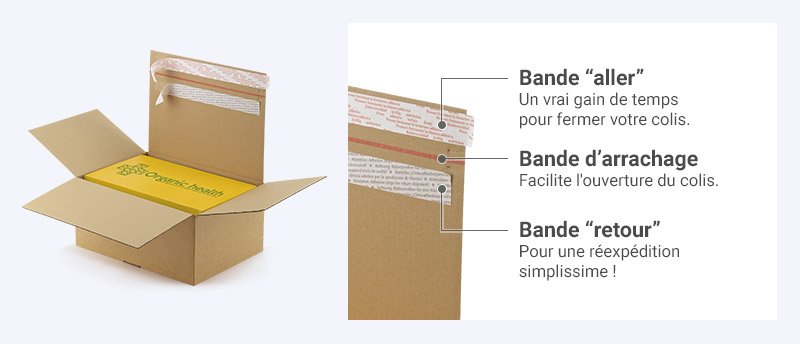
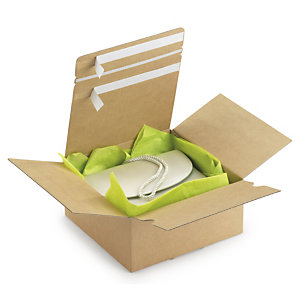 A classic for ecommerce: the round-trip box.With an automatic bottom: easy to open and close. Strong: single channel box with kraft coating. Guaranteed that the product will be returned in perfect condition.
A classic for ecommerce: the round-trip box.With an automatic bottom: easy to open and close. Strong: single channel box with kraft coating. Guaranteed that the product will be returned in perfect condition.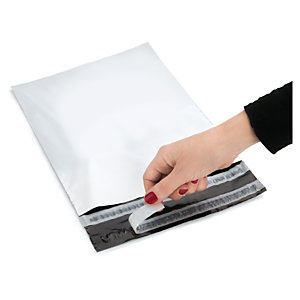 El opaque envelopewaterproof and indestructible, designed to facilitate returns. White in colour and totally opaque to guarantee confidentiality. It is very light, which reduces postal costs.
El opaque envelopewaterproof and indestructible, designed to facilitate returns. White in colour and totally opaque to guarantee confidentiality. It is very light, which reduces postal costs.
An alternative?
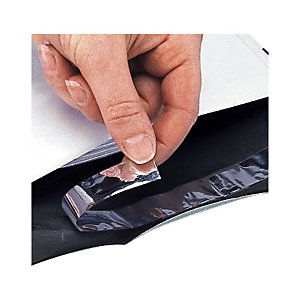 The plain opaque envelopeinserted in the boxes accompanied by an explanatory flyer (a solution adopted by Mango.com among others). It costs less per unit than a round-trip envelope and can be included in orders over a certain amount.
The plain opaque envelopeinserted in the boxes accompanied by an explanatory flyer (a solution adopted by Mango.com among others). It costs less per unit than a round-trip envelope and can be included in orders over a certain amount.











